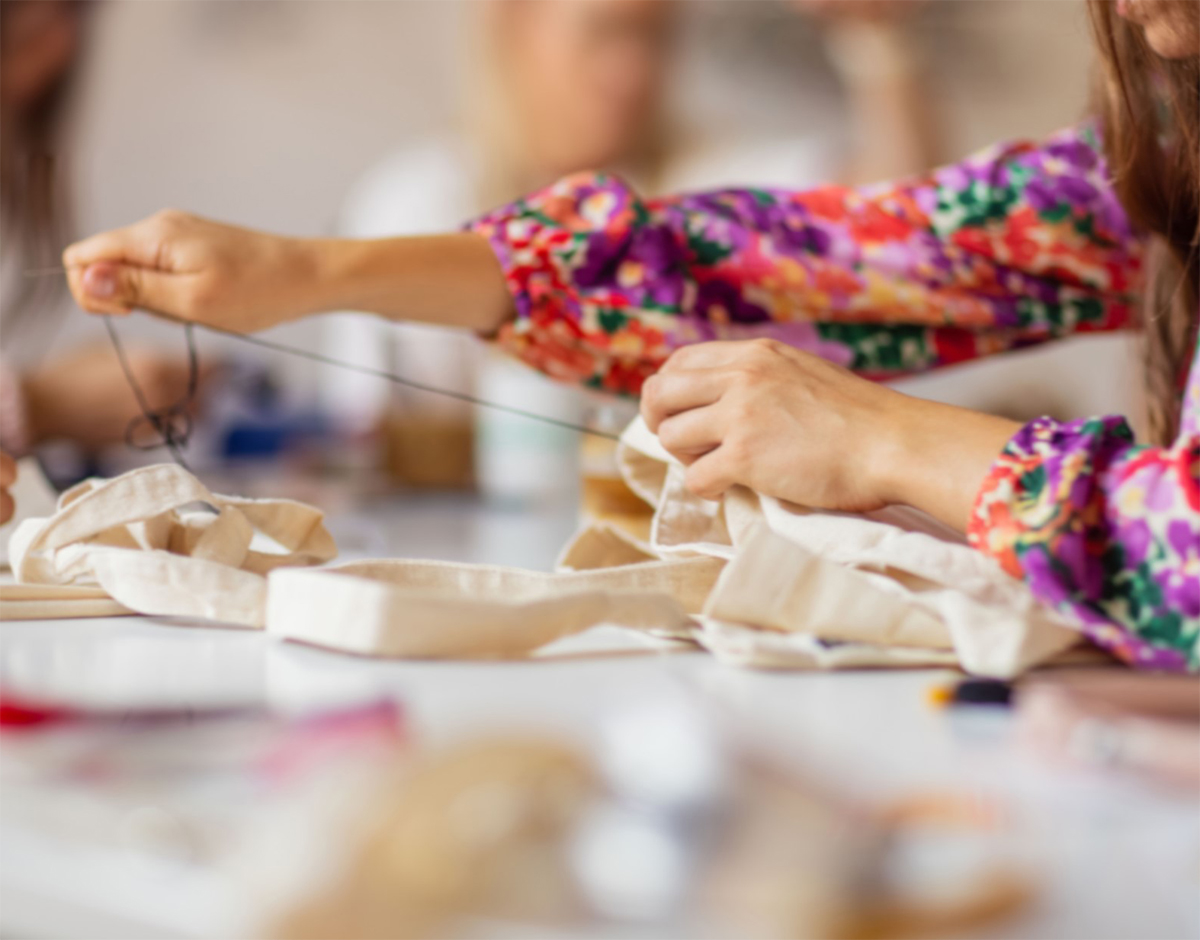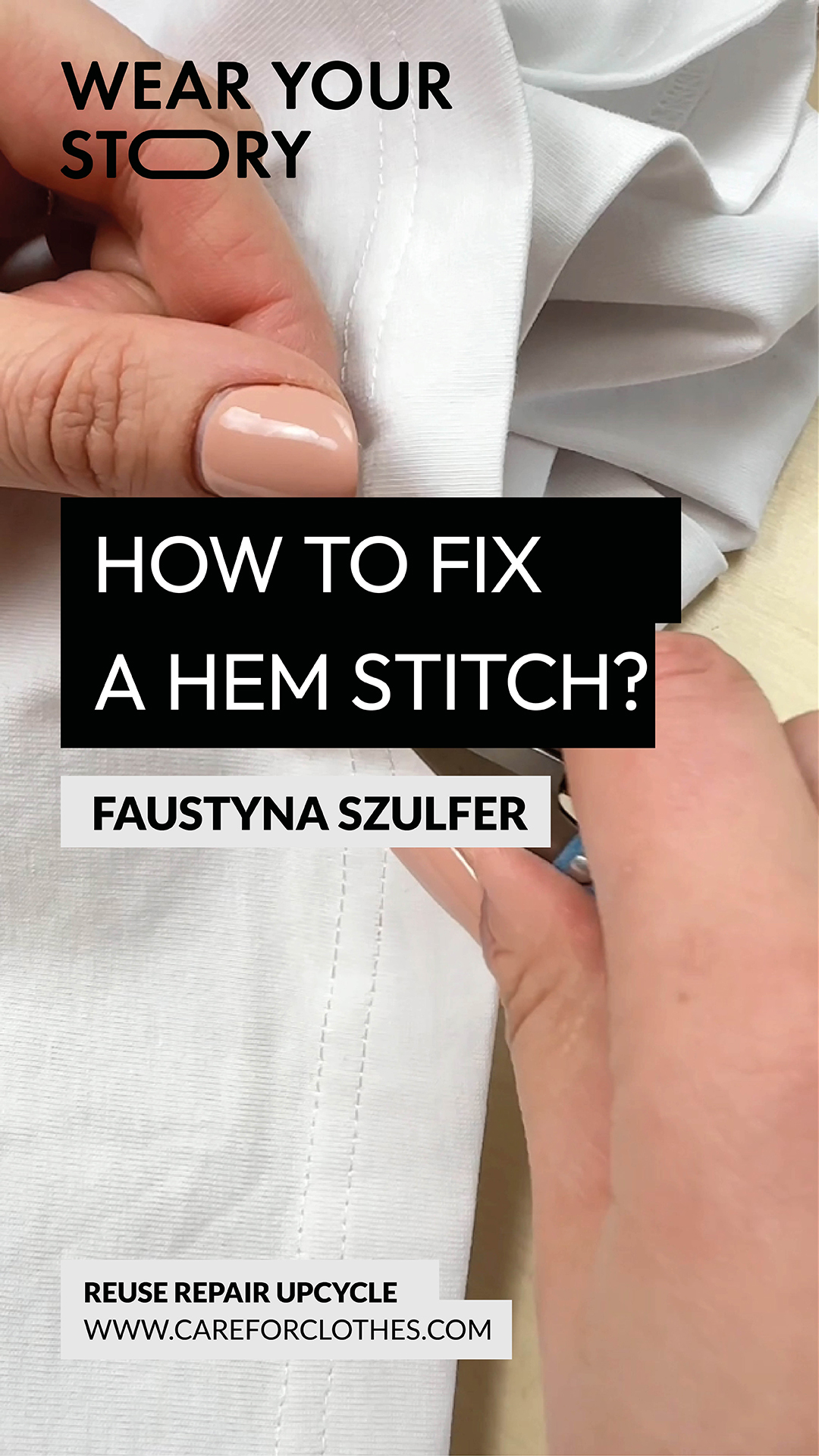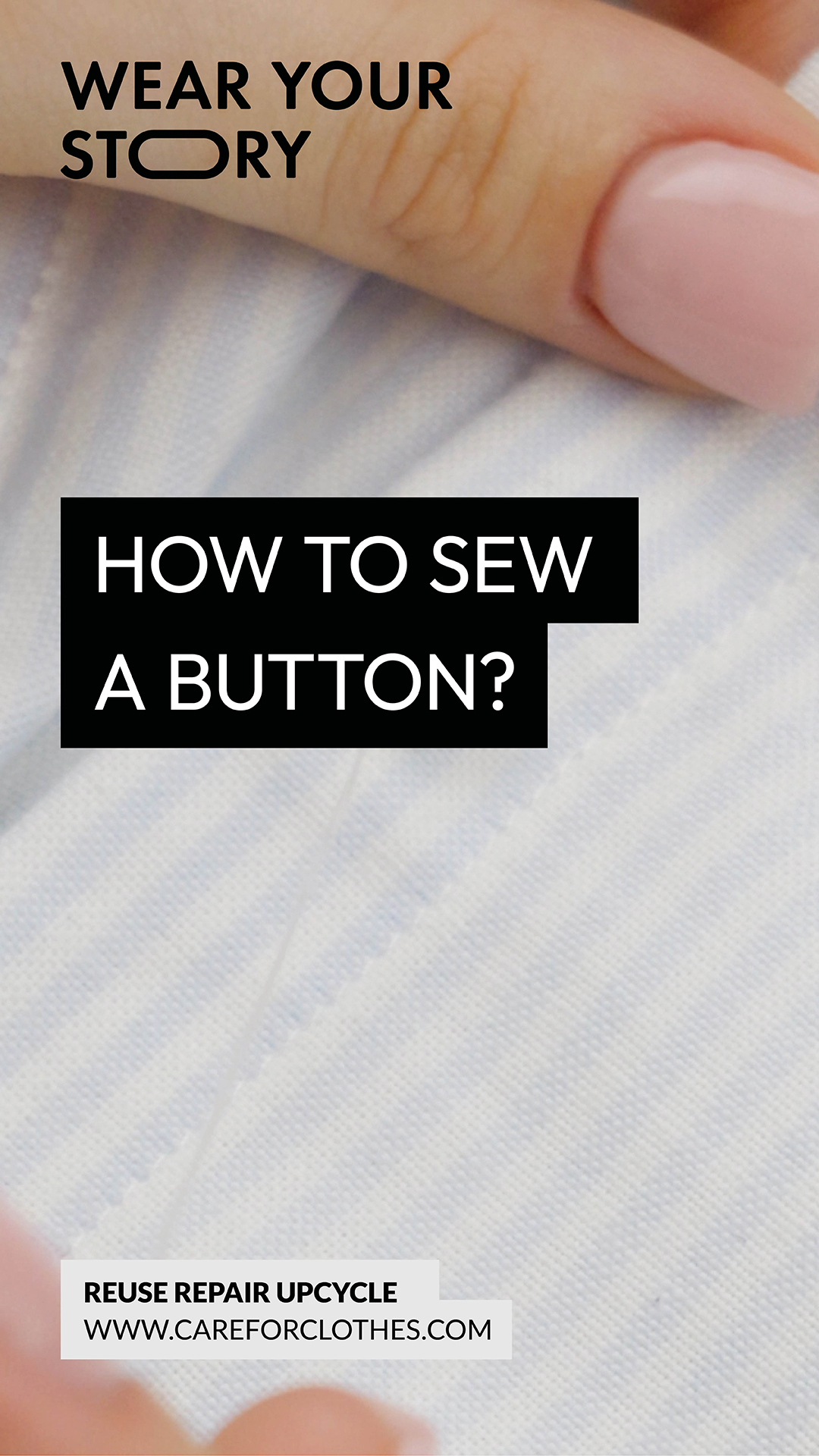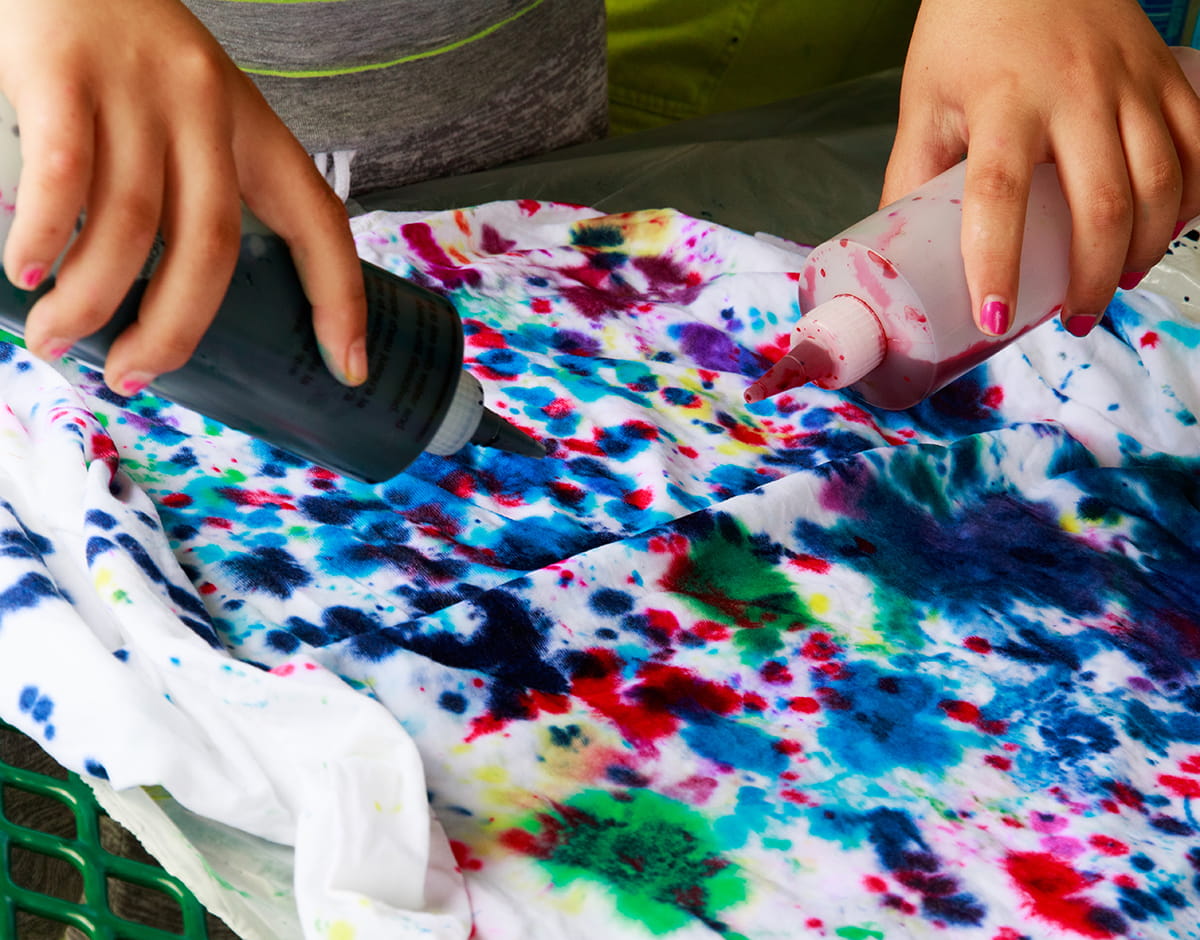Repair

Repairing will allow you to wear clothes with special memories and moments from your life for longer. Any story hidden in specific pieces of your wardrobe can stay with you for longer. A minor wrinkle, an abrasion or a broken zipper is no reason to swap your beloved shirt for a new one. Learn practical tips, tricks and hints on how to repair minor garment damage and extend the life of your clothes, as well as the memories and stories that come with it.
Learn how to start repairing clothes
Find out how to freshen up your clothes
Keeping clothes fresh and looking good does not always require washing. There are many ways to refresh fabrics without soaking them.
One is ironing with steam, which helps to remove odours and smooth out creases. Another way is to use special refreshing sprays containing odour neutralising substances. These work by applying a thin layer of fragrance to the garment to mask unwanted aromas. You can also use natural solutions, such as keeping your clothes outdoors, which allows your wardrobe to naturally aerate and remove unpleasant odours .
Baking soda is also effective in refreshing fabrics – sprinkle it on your clothes, leave it on for about half an hour and then shake it off. The baking soda absorbs odours and lightly cleans the fabric.
These techniques will not only help you to keep your clothes in excellent condition between washes, but can also help to prolong their life by preventing excessive fabric wear. Regular care of your fabrics will ensure that your wardrobe is always ready for any occasion, while maintaining the fullness of the colours and texture of your fabrics.
Buy the most necessary accessories for repairing clothes
Creating a home sewing corner is best started by gathering the right tools. Basic accessories that everyone should have at the beginning of their journey in repairing clothes include thread, various needles, tailor’s scissors, as well as a patching kit, a set of various buttons and a tailor’s tape measure. They will help you keep your wardrobe in perfect condition and allow you to react to any minor abrasion or breakage.
Learn how to repair delicate materials
Working with delicate fabrics, such as chiffon, fine viscose or lace requires special care and delicacy. Learning the techniques suitable for these demanding materials is the key to their successful repair and maintenance. Learning to use thinner threads, appropriate needles and delicate hand stitches can ensure that your repairs are both discreet and durable.
It is worth familiarising yourself with stain and cleaning methods specific to delicate fabrics, in order to avoid damage during care.
An example is the removal of the most stubborn oil stains. Here, it is best to reach for washing-up liquid as soon as possible. Simply rub the detergent generously into the fabric and then rinse with cold water. However, it is important to remember not to use intensely coloured detergents for light-coloured fabrics. After removing the stain, wash the garment according to the instructions on the label.
The skills you gain will not only keep your most discerning garments beautiful, but also give you the confidence to take care of every detail of your wardrobe.
Learn the basics of sewing and cutting
Mastering the basic techniques of sewing and cutting fabrics opens up a world of immense possibilities for repairing clothes. Knowing how to properly measure, cut and join different fabrics will not only allow you to make precise repairs, but also to create garments from scratch or modify existing ones to better suit your needs and preferences.
Start by learning basic hand and machine stitches, and then move on to more complex cutting techniques, paying attention to the properties and direction of the threads in the fabric. These skills will allow you to extend the life of your favourite garments and express your style in a more creative way.
We don't repair because we don't know how

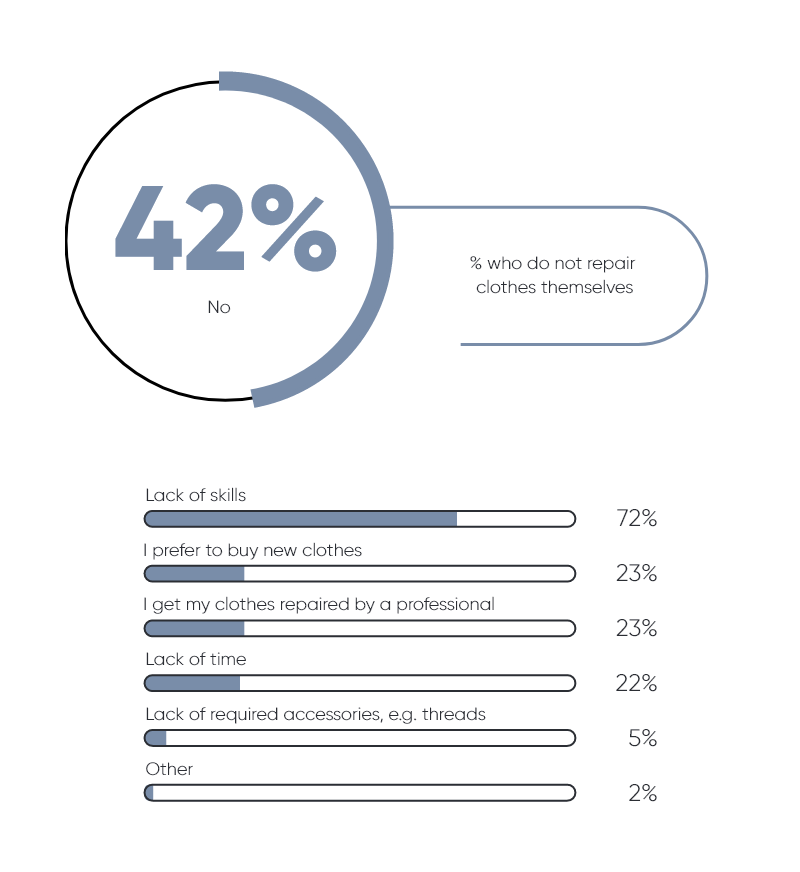
ARTICLES

